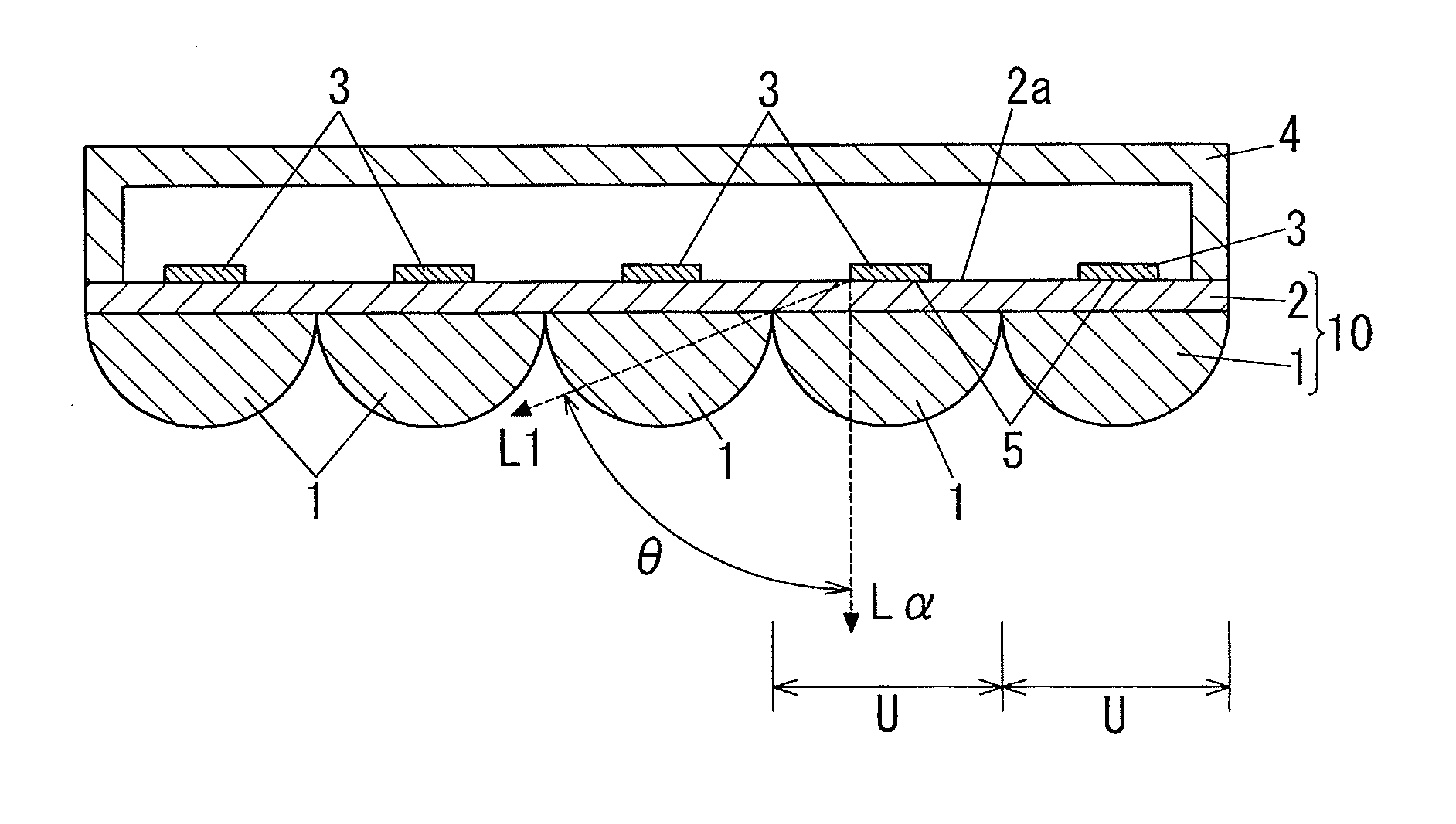Organic luminescent element
- Summary
- Abstract
- Description
- Claims
- Application Information
AI Technical Summary
Benefits of technology
Problems solved by technology
Method used
Image
Examples
example 1
Practical Example 1
[0048]At first, ITO (Indium Tin Oxide, a sheet resistance of 12 [Ω / □]) having a thickness of 1100 [Å] was formed on one side of a glass substrate (a refractive index of 1.51) having a thickness of 0.5 [mm], and thereby a glass substrate with ITO was provided. The glass substrate with ITO was processed by ultrasonic cleaning with deionized water during ten minutes, and then by ultrasonic cleaning with acetone during ten minutes, and then by ultrasonic cleaning with isopropyl alcohol during ten minutes. After that, the glass substrate with ITO was processed by steam cleaning with isopropyl alcoholic vapor during two minutes, and then was dried, and further was processed by ultraviolet ozone washing during ten minutes.
[0049]Then, the glass substrate with ITO was put in a vacuum evaporation system, and a co-deposition film of molybdenum oxide (MoO3) and α-NPD was deposited as a hole injection layer under reduce pressure of 5*10−5 [Pa], and the co-deposition film had a...
example 2
Practical Example 2
[0051]A light-emitting section was formed into a circular shape having a radius of 0.5 [mm] (its area was about 0.785 [mm2]). In regard to the rest, an organic luminescent element was produced like the Practical Example 1. That is, an organic electroluminescence element was formed on a surface of a glass substrate so as to have the same layer configuration, and then a hemispherical lens (a refractive index of 1.51) having a diameter of 5 [mm] was adhered by using a liquid adhesion bond having a refractive index of 1.51 on the glass substrate, and the hemispherical lens was adjusted so that the center of its circle coincides with the center of the light-emitting section's circle, and thereby an organic luminescent element was produced.
example 3
Practical Example 3
[0052]ITO (a sheet resistance of 12 [Ω / □]) having a thickness of 1100 [Å] was formed on one side of a glass substrate (a refractive index of 1.75) having a thickness of 0.5 [mm] and thereby a glass substrate with ITO was provided. Then, an organic electroluminescence element was produced like the layer configuration of the Practical Example 1 (a light-emitting section: a circular shape having a radius of 1.5 [mm] and an area of about 7.07 [mm2]).
[0053]A hemispherical lens (a refractive index of 1.75) having a diameter of 5 [mm] was adhered by using a liquid adhesion bond having a refractive index of 1.75 on a surface of the side opposite to a surface of the glass substrate where the organic electroluminescence element was produced. An attachment area of the hemispherical lens was about 19.6 [mm2]. When the hemispherical lens was adhered on the glass substrate, the hemispherical lens was adjusted so that the center of its circle coincides with the center of the lig...
PUM
 Login to View More
Login to View More Abstract
Description
Claims
Application Information
 Login to View More
Login to View More - R&D
- Intellectual Property
- Life Sciences
- Materials
- Tech Scout
- Unparalleled Data Quality
- Higher Quality Content
- 60% Fewer Hallucinations
Browse by: Latest US Patents, China's latest patents, Technical Efficacy Thesaurus, Application Domain, Technology Topic, Popular Technical Reports.
© 2025 PatSnap. All rights reserved.Legal|Privacy policy|Modern Slavery Act Transparency Statement|Sitemap|About US| Contact US: help@patsnap.com



